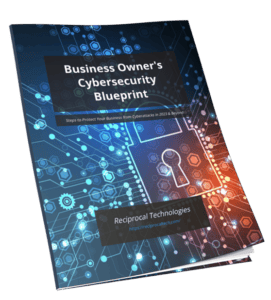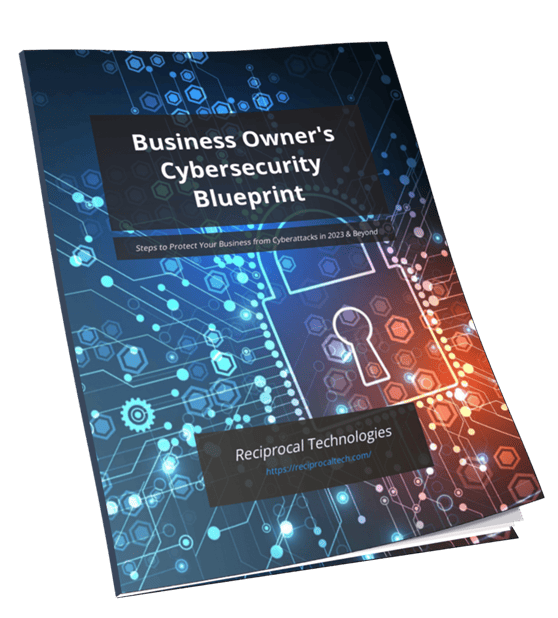Advanced Persistent Threats Guide and Remediation: How to Identify & Combat APTs

An Advanced Persistent Threat (APT) is a sophisticated and prolonged cyberattack that aims to steal sensitive data over an extended period. These attacks are carefully planned, meticulously executed, and often go undetected for months or even years. APTs pose significant risks to high-value organizations, including those in government, finance, and technology sectors.
We’ll examine APTs, investigating their lifecycle from infiltration to exfiltration, discussing the main features and methods used in APT attacks, including common tactics like spear-phishing and zero-day exploits.
We will also highlight important defense strategies that businesses can adopt to reduce the risks posed by APTs and protect their valuable assets from cyber threats.
Core Characteristics and Techniques of APT Attacks
Distinguishing Traits of APTs
Advanced Persistent Threats exhibit meticulous planning before launching attacks. They spend significant time studying their targets, identifying vulnerabilities, and planning infiltration methods.
APTs use various sophisticated techniques to gain access to target networks. This can include exploiting zero-day vulnerabilities, leveraging social engineering tactics, or compromising trusted relationships within the organization.
Once inside a network, APTs aim to maintain long-term access without being detected. They establish multiple points of compromise and use stealthy tactics to blend in with regular network traffic.
Common Tactics Used by APTs
A common technique employed by APT actors involves sending targeted emails to individuals within an organization, usually with malicious attachments or links designed to trick recipients into revealing sensitive information or granting access.
APTs often leverage previously unknown vulnerabilities in software or hardware that have not yet been patched by vendors. By exploiting these zero-day vulnerabilities, attackers can bypass traditional security measures.
Another tactic used by APTs is the theft of user credentials through various means such as keylogging, phishing, or brute force attacks. Once credentials are obtained, attackers can move laterally within the network.
APT groups commonly deploy backdoor Trojans on compromised systems. These malicious programs allow attackers to maintain persistent access to the network, exfiltrate data, and execute additional commands without being detected easily.
The Lifecycle of an APT Attack
1. Infiltration
In this initial stage, the threat actor gains access to the target network through various means such as spear-phishing emails, watering hole attacks, or exploiting vulnerabilities in software. The goal of this phase is to establish a foothold within the network without raising suspicion, allowing the attacker to move laterally and escalate privileges.
2. Exploration/Expansion
Once inside the network, the attacker explores the environment to identify valuable assets, map out the network topology, and expand their control by planting backdoors or creating additional entry points. This stage involves reconnaissance activities to understand the network’s layout and locate critical data for exfiltration.
3. Exfiltration
At this point, the attacker begins siphoning off sensitive information from the compromised network. This could involve stealing intellectual property, financial data, or personal information over an extended period. Data exfiltration may occur gradually to avoid detection or in large batches depending on the attacker’s objectives.
4. Maintenance
In the final stage, the attacker focuses on maintaining access to the compromised network for future operations. This involves hiding their presence, updating malware tools, and ensuring continued access to exfiltrated data. Maintenance activities are vital for long-term persistence and enable threat actors to conduct ongoing espionage or sabotage without being detected.
Detecting the Presence of an Advanced Persistent Threat
Recognizing the signs of Advanced Persistent Threat early is foundational to limit damage and initiate a swift response. APTs are designed to blend into normal network activity, making detection challenging. However, certain warning signs often indicate their presence:
1. Unusual Account Activity
Frequent login attempts at odd hours, sudden privilege escalations, or access from unfamiliar locations point to compromised credentials or insider threats.
2. Increased Backdoor Trojan Alerts
Detection systems flagging multiple backdoor Trojan instances suggest attackers have established or are attempting persistent access channels within your network.
3. Abnormal Outbound Data Movements
Unexpected large data transfers, especially to external IPs not commonly associated with business operations, may signal data exfiltration efforts by APT actors.
Other indicators include:
- Sudden spikes in network traffic without a clear business cause.
- New and unauthorized software or scripts running on critical systems.
- Alerts on unusual DNS queries hinting at command-and-control communications.
Monitoring these signs requires comprehensive visibility across endpoints, user behavior analytics, and continuous network traffic inspection. Security tools like Endpoint Detection and Response (EDR) solutions and Security Information and Event Management (SIEM) platforms aggregate diverse logs to correlate suspicious activities effectively.
Detecting APTs hinges on identifying subtle anomalies that differ from typical cyberattacks. Unlike blunt-force ransomware or mass phishing campaigns, APTs maintain stealth for extended periods. This stealth demands security teams remain vigilant against irregularities that could otherwise be dismissed as false positives or benign errors.
Detection and Response Technologies Against APTs
To effectively combat APTs, organizations must employ a combination of detection and response technologies.
Endpoint Detection and Response
One such solution is Falcon Insight Endpoint Detection and Response (EDR) by CrowdStrike. EDR tools are designed to monitor endpoints, such as laptops and servers, for suspicious activities. They provide real-time visibility into endpoint behavior and enable security teams to investigate and respond to incidents promptly.
Falcon Insight EDR goes beyond traditional antivirus solutions by leveraging advanced techniques like behavioral analysis and machine learning. This allows it to detect Indicators of Attack (IOAs) that may go unnoticed by signature-based approaches.
Security Information and Event Management
Organizations should also consider implementing Security Information and Event Management (SIEM) platforms. SIEM solutions aggregate logs from various sources, including servers, network devices, and applications, to provide a centralized view of security events.
By analyzing these logs, SIEM platforms can uncover Indicators of Compromise (IOCs) that indicate a potential breach. This information is critical for incident response teams as it helps them understand the scope and impact of an attack.
Combining EDR with SIEM creates a powerful defense against APTs. While EDR focuses on detecting threats at the endpoint level, SIEM provides a broader perspective by correlating events across the entire IT environment. Together, they enable organizations to identify and respond to sophisticated attacks more effectively.
Essential Practices to Mitigate APT Risks
Protecting against advanced persistent threats requires a disciplined and proactive approach that integrates multiple layers of security measures. The complexity and persistence of APTs mean that traditional defenses alone are insufficient to keep these attackers at bay.
Timely patching and software updating
Timely patching and software updating form the frontline defense against exploitable vulnerabilities. Cybercriminals behind APTs frequently leverage unpatched software flaws to gain initial access or escalate privileges within a network. Establishing a rigorous patch management process ensures vulnerabilities are remediated swiftly before adversaries can exploit them. This includes operating systems, applications, firmware, and third-party components.
Continuous network monitoring for anomalies
Continuous network monitoring for anomalies is essential in identifying early signs of an APT attack. Sophisticated attackers often maintain a low profile, blending their activities with normal network traffic. Employing advanced monitoring tools capable of detecting unusual patterns—such as unexpected data flows, abnormal login behavior, or spikes in outbound traffic—helps uncover hidden threats before damage occurs. This ongoing vigilance supports rapid detection and response.
Regular penetration testing
Regular penetration testing challenges your defenses by simulating real-world attacks, exposing weaknesses before adversaries do. Pen tests provide actionable insights into security gaps across applications, networks, and endpoints. Incorporating findings into your security roadmap strengthens resiliency against APT tactics.
Adoption of Zero Trust principles
Adoption of Zero Trust principles fundamentally changes how access is granted and controlled within an organization. Key elements include:
- Least privilege access: Users and systems receive only the minimum permissions necessary to perform their roles.
- Multi-factor authentication (MFA): Enforces strong identity verification to prevent unauthorized access even if credentials are compromised.
- Network segmentation: Limits lateral movement opportunities for attackers who breach perimeter defenses.
Leveraging Threat Intelligence and Human Expertise in APT Defense
Threat intelligence importance cannot be overstated when defending against Advanced Persistent Threats. Integrating automated threat intelligence with endpoint security tools enhances your ability to detect and respond to attacks quickly. Automated systems analyze vast amounts of data in real time, identifying Indicators of Attack (IOAs) and Indicators of Compromise (IOCs) that would likely go unnoticed by manual reviews alone.
Benefits of this integration include:
- Faster detection: Automated tools scan for known threat signatures and anomalous behaviors across endpoints, minimizing the attacker’s dwell time.
- Contextual awareness: Threat intelligence platforms enrich alerts with detailed information about threat actors, attack methods, and campaign indicators.
- Proactive defense: Timely updates from global intelligence feeds enable your security infrastructure to anticipate emerging threats before they impact your environment.
Human expertise complements automation by providing deeper analysis and intuition that machines cannot replicate. Managed threat hunting teams specialize in uncovering sophisticated or hidden threats that evade automated detection. They apply hypothesis-driven investigations, correlating disparate data points to expose stealthy adversaries.
Functions of human-led managed threat hunting include:
- Conducting behavioral analysis beyond signature-based detection.
- Investigating subtle anomalies indicating lateral movement or privilege escalation.
- Validating alerts to reduce false positives and prioritize response efforts.
- Developing custom detection rules tailored to your unique environment.
Defending Your Organization Against APTs
Defending against Advanced Persistent Threats requires a comprehensive and multi-layered approach. Here are the key strategies to consider:
1. Patch Management
Regularly updating and patching software, operating systems, and applications is crucial to fix vulnerabilities that attackers may exploit.
2. Zero Trust Architecture
Implementing a Zero Trust model ensures that no one, whether inside or outside the network, is trusted by default. This approach requires continuous verification of users and devices.
3. Integrated Threat Intelligence
Utilizing threat intelligence feeds and platforms helps organizations stay informed about emerging threats and vulnerabilities specific to their industry.
4. Managed Hunting Services
Engaging with managed security service providers (MSSPs) who offer proactive threat hunting services can enhance an organization’s ability to detect and respond to sophisticated attacks.
It’s important to remember that while these strategies are effective, they must be complemented by a culture of vigilance within the organization. Employees should be trained to recognize phishing attempts and suspicious activities, as human error is often a weak link in security.
Having an incident response plan in place ensures that organizations can quickly contain and mitigate the impact of an APT attack. Regularly testing this plan through tabletop exercises or simulations will help identify any gaps or areas for improvement.
With these multi-layered defense strategies, your business can significantly reduce the risk of falling victim to advanced adversaries and other cyber threats.
Frequently Asked Questions About APTs
What is an Advanced Persistent Threat (APT) and why is it significant in cybersecurity?
An Advanced Persistent Threat (APT) is a prolonged and targeted cyberattack where attackers gain unauthorized access to a network to steal data or cause damage. APTs are significant because they involve extensive planning, sophisticated techniques, and sustained presence, making them highly challenging to detect and mitigate.
What are the core characteristics and common techniques used in APT attacks?
APTs are characterized by extensive planning, diverse infiltration methods, and maintaining long-term access within networks. Common techniques include spear-phishing to gain initial access, exploiting zero-day vulnerabilities, credential theft, and deploying backdoor Trojans to ensure persistent control over compromised systems.
Can you explain the typical lifecycle stages of an APT attack?
The lifecycle of an APT attack generally includes four stages: Infiltration (gaining initial access), Exploration/Expansion (mapping the network and escalating privileges), Exfiltration (stealing sensitive data), and Maintenance (establishing persistence). Understanding these stages is critical for timely detection and effective response.
What are common signs that indicate the presence of an Advanced Persistent Threat in a network?
Key warning signs include unusual account activities such as unexpected login times or locations, increased alerts related to backdoor Trojans, abnormal outbound data flows that may suggest data exfiltration, and other anomalous behaviors detected through continuous network monitoring.
How do technologies like Falcon Insight Endpoint Detection and Response help in defending against APTs?
Solutions like CrowdStrike Falcon Insight EDR detect Indicators of Attack (IOAs) by monitoring endpoint behaviors for suspicious activities. Security Information and Event Management (SIEM) platforms aggregate logs from various sources to uncover Indicators of Compromise (IOCs), enabling faster identification and mitigation of APT threats.
What essential business practices can organizations adopt to mitigate risks posed by Advanced Persistent Threats?
Organizations should implement timely patching and software updates to remediate vulnerabilities, conduct continuous network monitoring for anomalies, perform regular penetration testing, and adopt Zero Trust security principles including least privilege access controls and multi-factor authentication (MFA) to reduce exposure to APT attacks.
About the Author
Author’s recent posts
Download the
Business Owner’s Cybersecurity Blueprint


